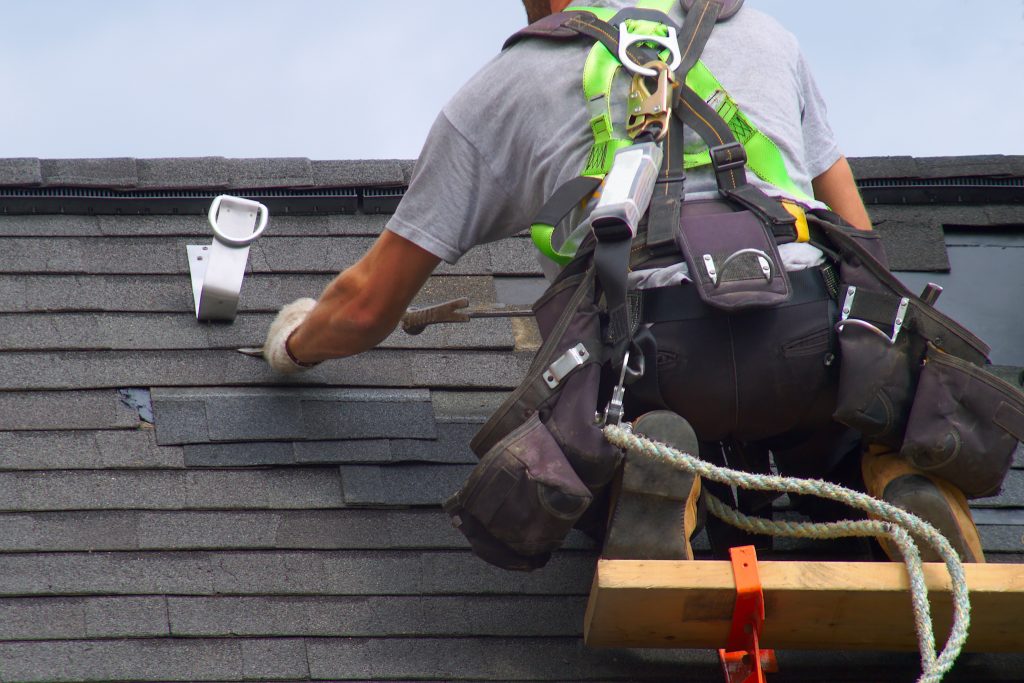
In the workplace, protecting employees is an essential aspect of running a successful enterprise. That being said, falling from roofs is among the most common cause of injury or death. When running a business where anyone will be on the roof, it’s crucial to make sure fall protection protocols are in place.
Here are some ways to prevent roof falls in the workplace:
Follow OSHA Requirements
Occupational Safety and Health Administration (OSHA) was created to help ensure safe working environments for the workplace. Its mission of safety in the workplace is upheld by setting and enforcing standards, providing proper training, outreach, and both assistance and education in safety precautions and requirements.
OSHA covers the majority of private sector employers as well as their workers. Plus, they cover a portion of public sector workers and employers among all 50 states.
When it comes to their requirements for preventing rooftop falls, they require that employers will:
- Provide working environments that are free of danger relating to rooftop falls.
- Ensure floors in the work area are clean and dry so as not to pose a threat to any of the employees working within the building.
- Choose and provide all of the required personal protective equipment at no additional cost to employees.
- Provide training to employees about the potential job hazards as well as how they can avoid those throughout the workday.
There are OSHA standards for fall protection that are specific to different situations, for example:
- Work in the construction of bridges, high-rise buildings, etc.
- Work outside of the construction industry
- Acknowledging and evaluating what fall protection hazards exist in the workplace
- Falls from ladders
- Safety walkaround checklists
To keep it simple, OSHA requires everything an employer needs to protect their employees and do so in a manner that meets OSHA’s high standards.
Provide Roof Fall Protection Systems
The easiest solution to roof fall injuries is to install different variations of roof fall protection systems, including:
- Roof Davits: These rooftop anchors are meant to be used when working on the exterior of the building, such as fixing the façade, washing windows, or painting and caulking. Anchors should be able to withstand 5,000 pounds in any direction to be considered OSHA-qualified.
- Guardrails: Safety rails are especially important when working on the roof of buildings. It’s best to utilize guardrails that are easy to install and can be relocated as the job needs. Guardrails are great to use around skylights as well.
- Skylight Protection: Injuries due to employees falling through skylights are rather high, so having some form of skylight protection is a must. Unprotected skylights are considered unsafe as a hole in the ceiling because the glass or plastic in them can be weakened by the sun over the years, making them easy to break. Thus, workers could fall through. However, skylight screens, as well as guardrails, are available to protect employees from this risk.
- Loading Dock Gates: These are meant to protect employees from falling from loading docks. These gates need to be anchored properly to meet OSHA requirements.
- Horizontal Lifelines: These lifelines can eliminate falls altogether by providing a safe way for workers to move on buildings, scaffoldings, or other areas of roofs. While horizontal lifelines are a great tool, they shouldn’t be the first line of defense against falls.
Of course, other precautions can be taken as well, but these are some of the most popular and safe options available.
What Increases Fall Risks
- Weather Conditions
No matter the time of year, workers will be met with some kind of weather that can prove hazardous. Whether that be rain or wind, snow or frost, any weather condition can aggravate already hazardous work conditions. Not only can precipitation make for slippery surfaces that can cause workers to lose their footing, but frozen hands or feet due to cold can make a worker clumsy as well.
- Equipment Use/Maintenance
Not only should equipment be used correctly by workers, but machines and equipment must be in good working condition. Equipment should be inspected regularly so that damaged or broken ones can be identified and removed as quickly as possible. The greatest fall risk relating to equipment comes from damaged ladders or misuse of a ladder. Because of this, OSHA guidelines have a section specifically for setup and maintenance requirements relating to ladders.
- Worker Behavior
As an employee, there’s a certain amount of responsibility that must be taken to remain safe in the workplace. This can include simply doing the job right and not taking shortcuts that make your life easier, but in doing so, create an unsafe work environment. While the employer can face a fine for fall-protection violations, you as an employee have much more to lose as you can be injured, killed, or lose your job.
That being said, many states have even toughened their worker’s compensation requirements. If you’ve been injured on the job, it’s now more difficult to receive compensation, depending on the reason why you were injured on the job and whose fault it ultimately was. Industrial Roofing Contractors and Roofing workers are especially at risk because they’re working at heights that can be deadly if they fall, no matter the reason.
Conclusion
While some may find the high standards of OSHA safety to be a roadblock or nuisance, their roof fall protection protocols are put in place to protect the worker, first and foremost, and the employer second. Both employer and employee should be working together to ensure all fall protection protocols are put in place to ensure no one is hurt or even killed while working on the job.




